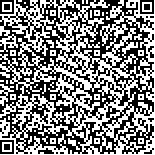| 摘要: |
| [摘要] 目的 评价晶星900光学生物测量仪测量近视患者眼轴长度(AL)及中央角膜厚度(CCT)的准确性。方法 选取在广西视光中心就诊的近视患者48例(96眼),年龄18~45(26.38±6.03)岁,等效球镜-(1.0~6.75)D。采用晶星900和A超测量AL,用晶星900、A超和Pentacam测量CCT,应用配对t检验比较不同方法测量结果的差异,采用Pearson相关分析评估不同仪器测量结果的相关性,Bland-Altman分析评价不同方法测量结果的一致性。结果 晶星900和A超测得的AL分别为(25.21±1.18)mm和(25.09±1.17)mm,差异有统计学意义(P<0.01),两者间呈正相关关系(r=0.982,P<0.01),95%一致性界限为(-0.31~0.10)mm。晶星900、A超和Pentacam测得的CCT分别为(532.55±24.09)μm、(530.03±23.39)μm和(537.64±23.75)μm,差异均有统计学意义(P均<0.01),Pearson相关分析显示晶星900测得的AL与A超(r=0.985,P<0.01)、Pentacam(r=0.956,P<0.01)的结果呈正相关关系,其三者测量CCT的95%界限:A超与晶星900为(-10.6~6.0)μm、晶星900与pentacam为(-14.7~8.4)μm、A超与Pentacam为(-14.8~5.2)μm。结论 晶星900与A超所测AL相关性好;晶星900与A超、Pentacam所测量CCT均有明显相关性,其中晶星900与金标准的A超所测得的CCT一致性较好。晶星900可以作为近视患者AL和CCT的非接触式测量工具之一。 |
| 关键词: 眼轴 中央角膜厚度 光学生物测量 近视 准确性 |
| DOI:10.3969/j.issn.1674-3806.2018.12.13 |
| 分类号:R 770.42 |
| 基金项目:广西自然科学基金项目(编号:2015GXNSFBA139148) |
|
| The accuracy of Lenstar 900 optical biometry for measurement of axial length and central corneal thickness in myopia |
|
WANG Ying, XIAO Xin, HUANG Hui-Yao, et al.
|
|
Vision Science and Optometry Center, the People′s Hospital of Guangxi Zhuang Autonomous Region, Nanning 530021, China
|
| Abstract: |
| [Abstract] Objective To evaluate the accuracy of Lenstar 900 optical biometry for measurement of axial length(AL) and central corneal thickness(CCT) in myopia. Methods Forty-eight myopic patients (96 eyes) with spherical equivalent(SE) varied from -1.00~-6.75 D, aged 18~45(26.38±6.03)years, were recruited from the Visual Science and Optometry center of Guangxi. AL was measured by Lenstar 900 and A-scan, and CCT was measured by Lenstar 900, A-scan and Pentacam. The paired t-test was used to compare the differences of the measured results of different instruments. Pearson correlation analysis and Bland-Altman analysis were used to evaluate the correlation and the consistency of the measured results of the different methods. Results The values of AL measured by Lenstar 900 and A-scan were (25.21±1.18) and (25.09±1.17)mm, respectively, with a significant difference between the two measured methods(P<0.01) and a significant correlation between them (r=0.982, P<0.01), and the 95% limit of agreement(LOA) was (-0.31~0.10)mm. The values of CCT measured by Lenstar 900, A-scan and Pentacam were (532.55±24.09)μm, (530.03±23.39)μm and (537.64±23.75)μm respectively. There was significant difference among the three methods(all P<0.01). Pearson correlation analysis showed that the value of AL measured by Lenstar 900 was positively correlated with the results of A-scan(r=0.985, P<0.01), and the results of Pentacam(r=0.956, P<0.01). The values of 95% LOA of CCT were (-10.6~6.0)μm for A-scan versus Lenstar 900, (-14.7~8.4)μm for Lenstar 900 versus Pentacam, and (-14.8~5.2)μm for A-scan versus Pentacam, respectively. Conclusion AL measured by Lenstar 900 is significantly correlated with that measured by ultrasound A-scan. Similarly, CCT measured by Lenstar 900 shows significant correlation with that measured by ultrasound A-scan or Pentacam. CCT measured by Lenstar 900 shows satisfactory consistency with that measured by the gold standard ultrasound A-scan. Lenstar 900 can be used as one of the non-contact measurement tools for AL and CCT in myopia. |
| Key words: Axial length(AL) Central corneal thickness(CCT) Optical biometry Myopia Accuracy |

